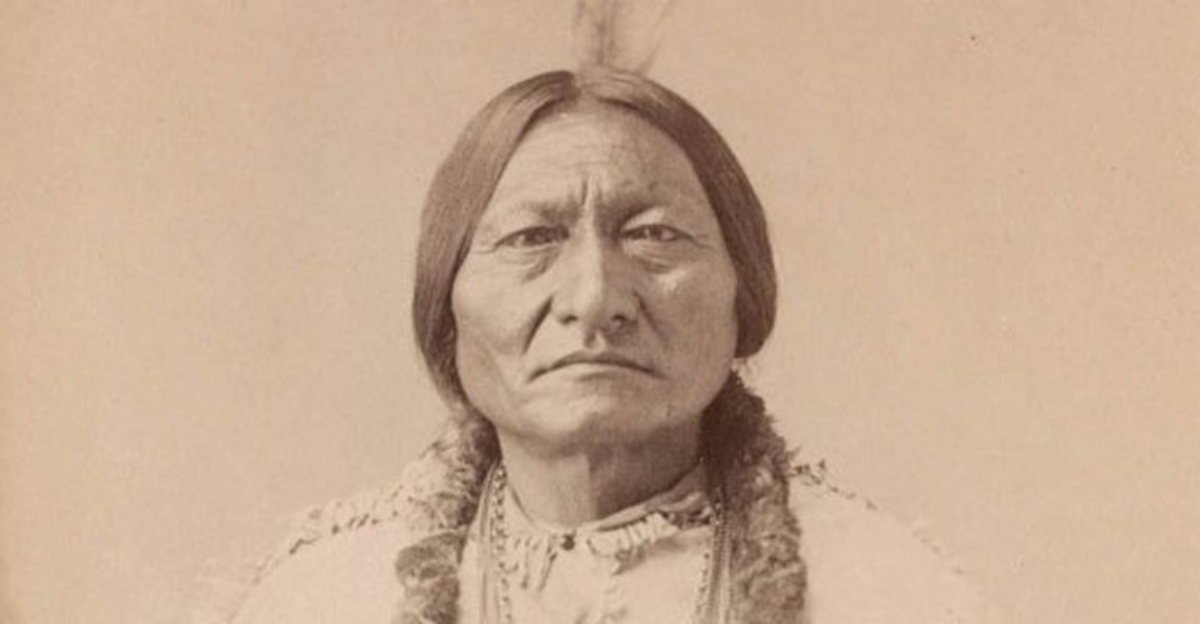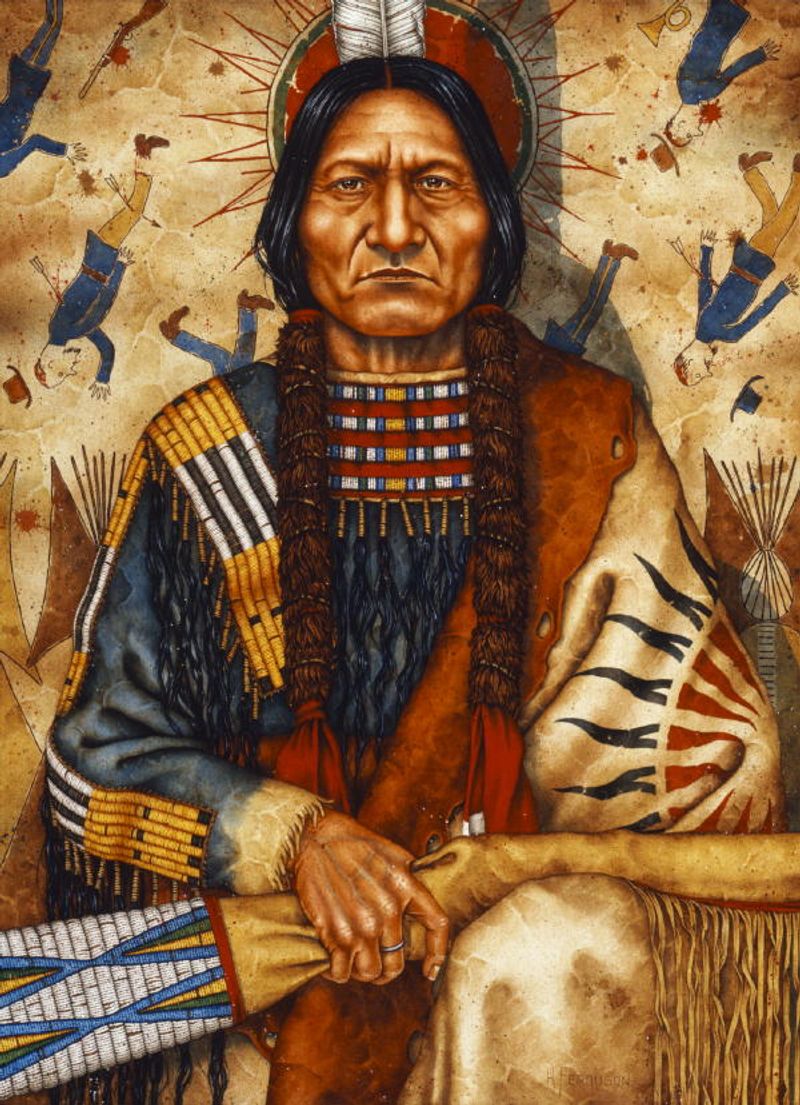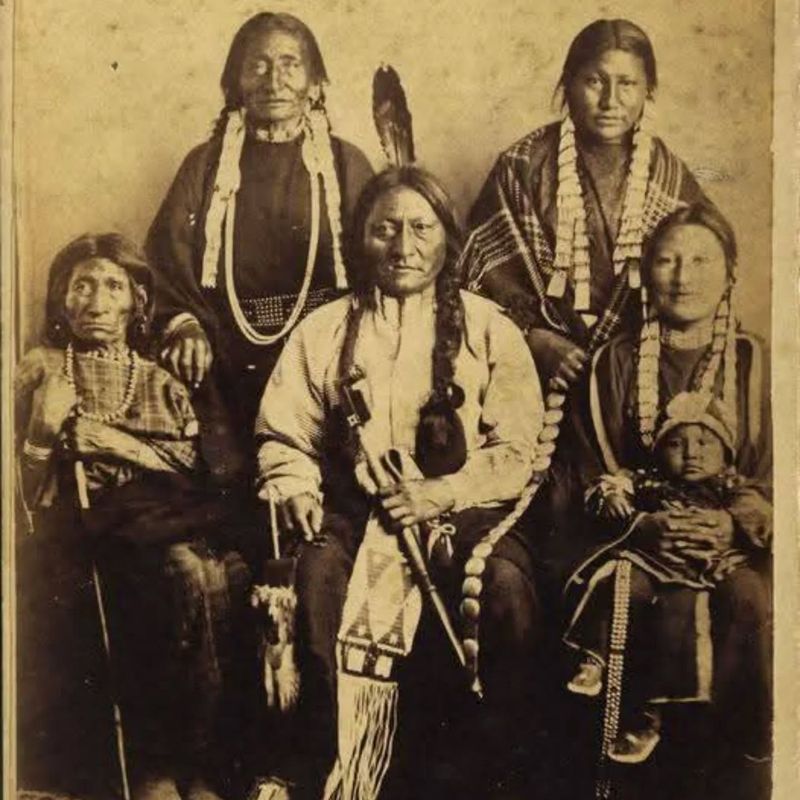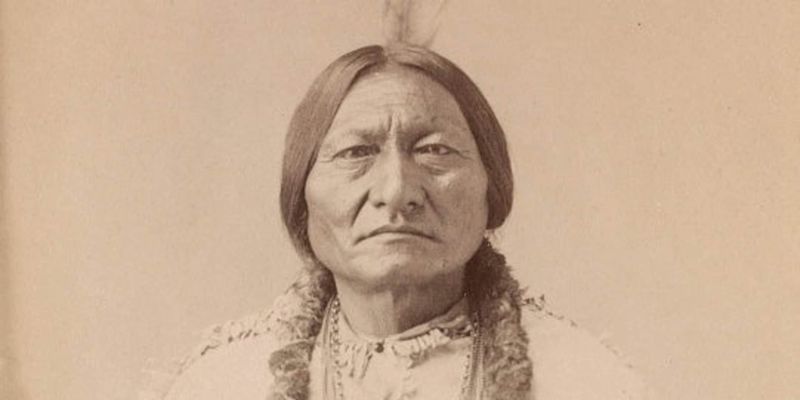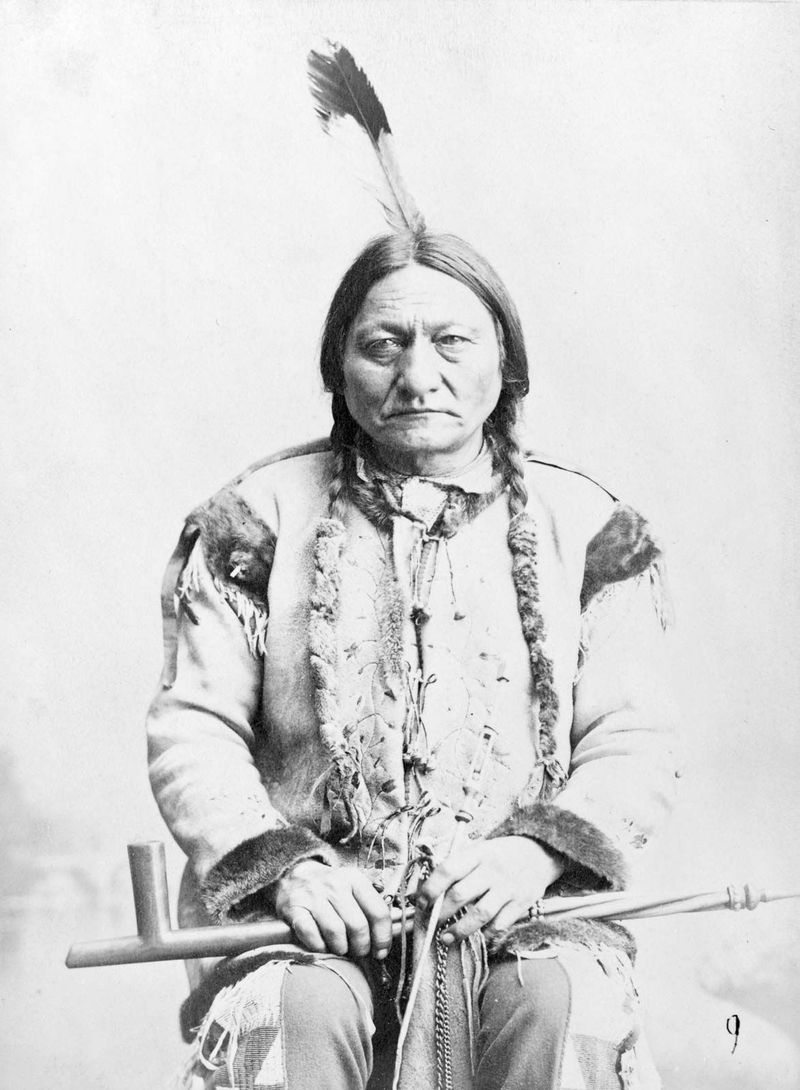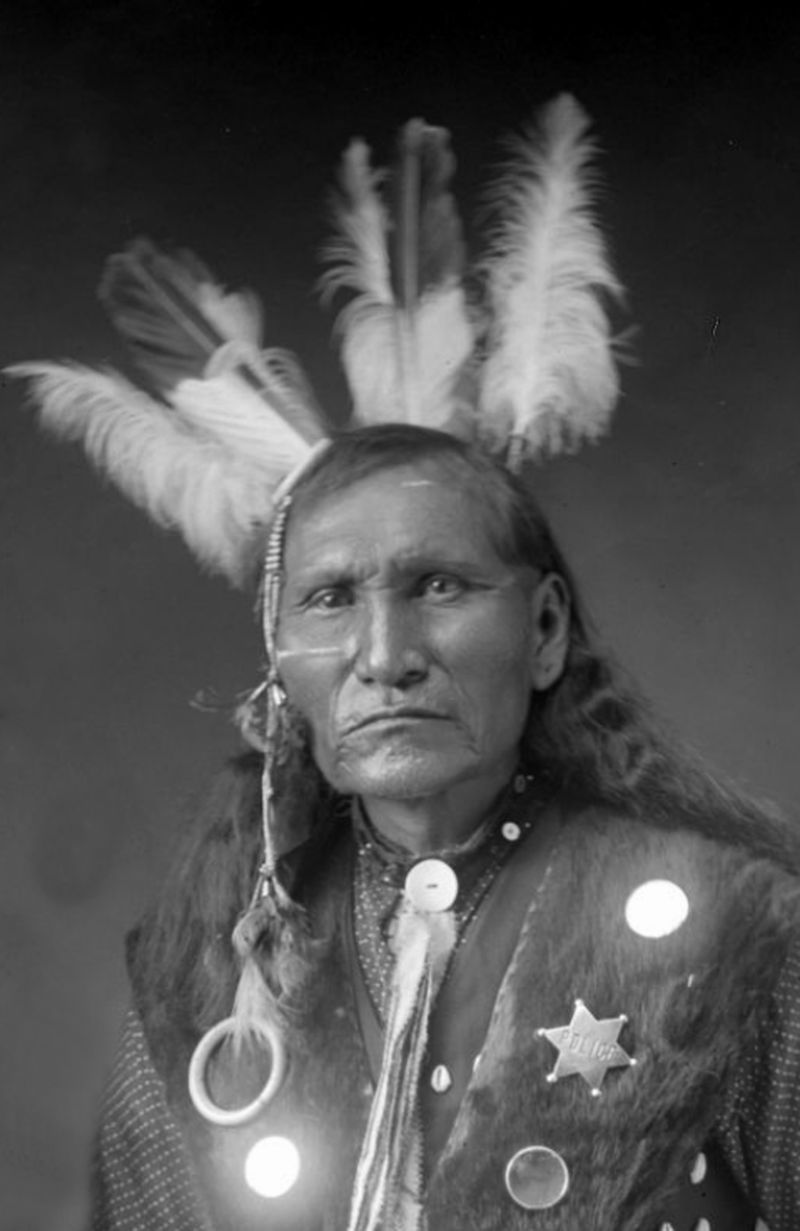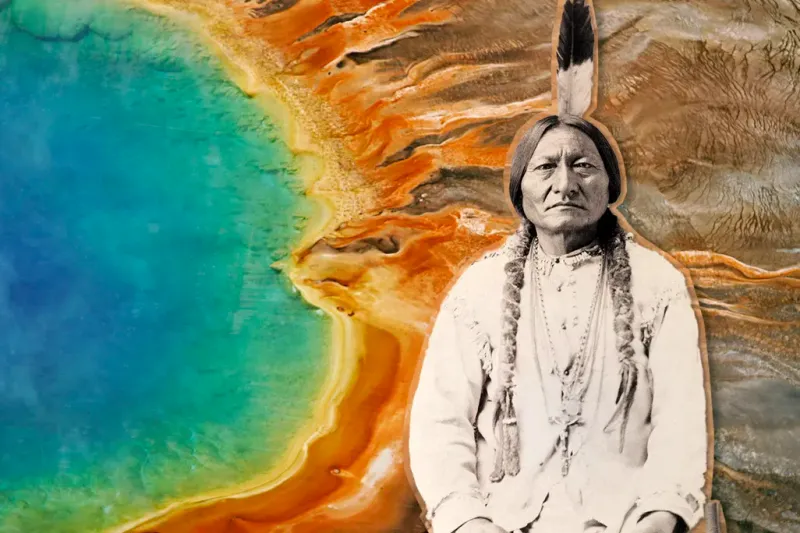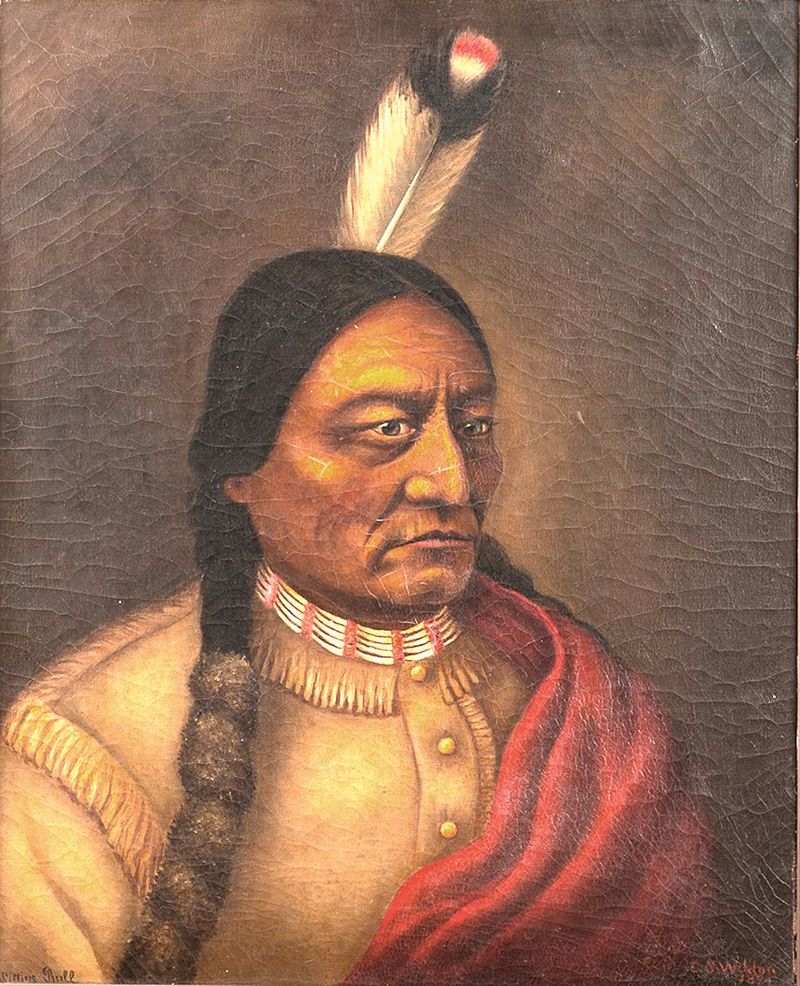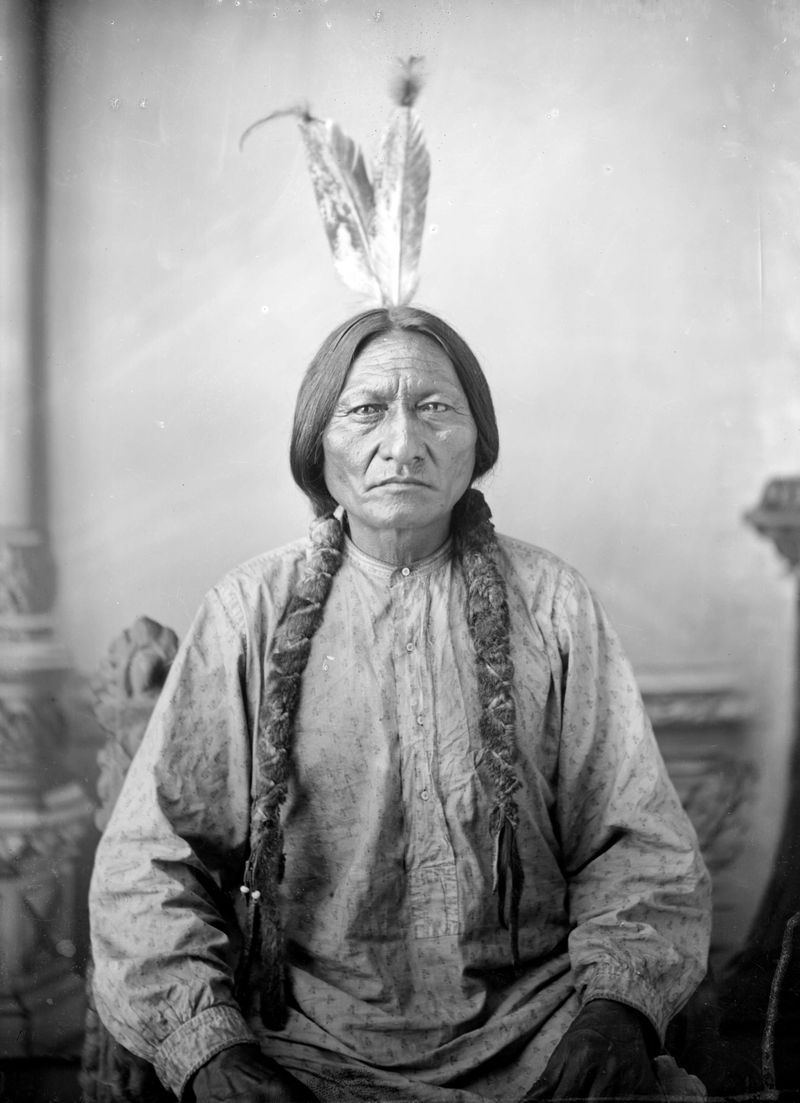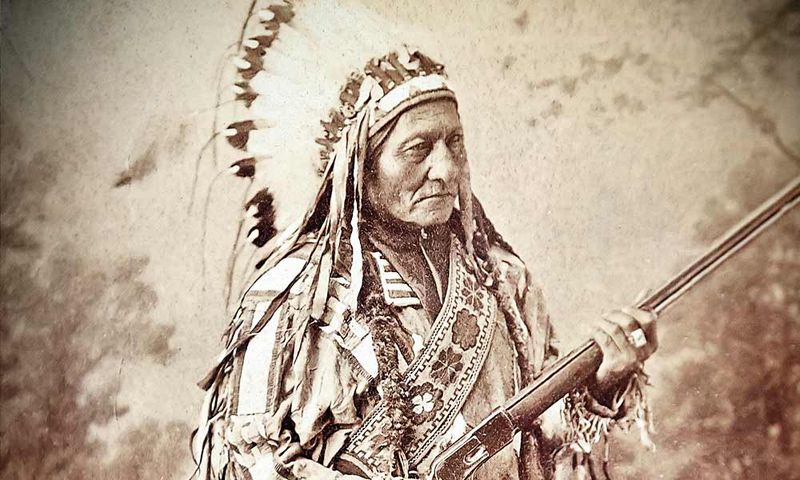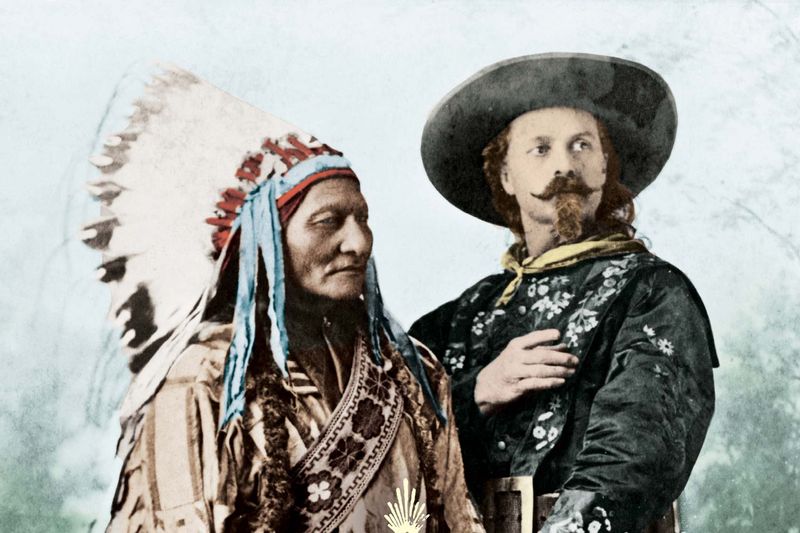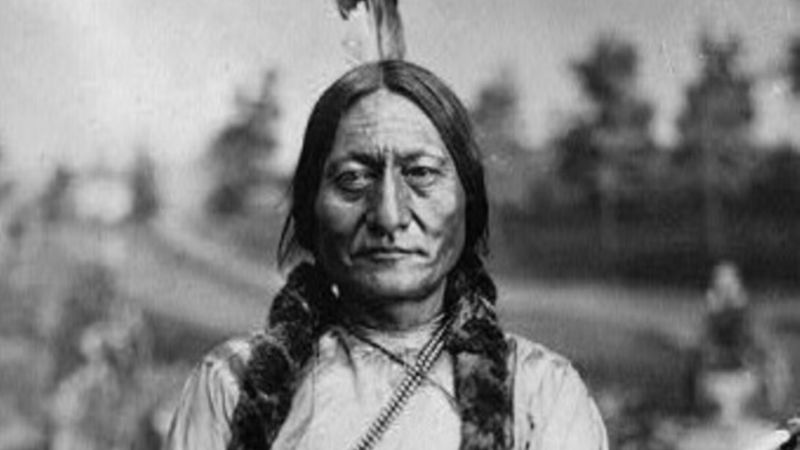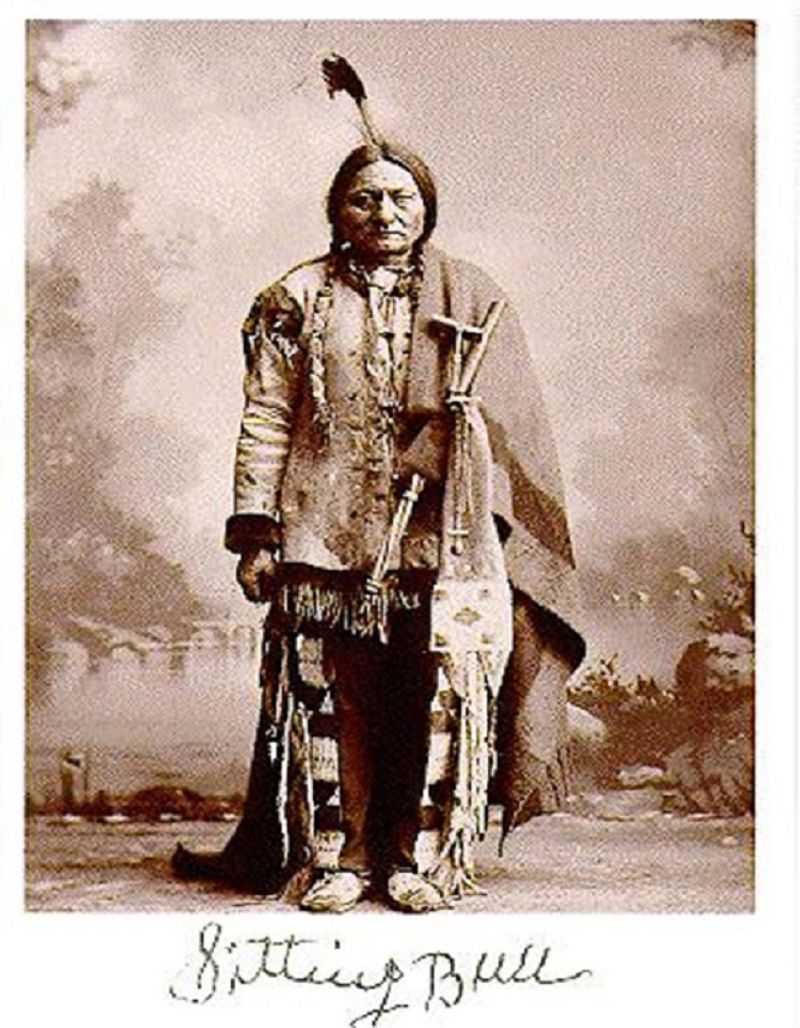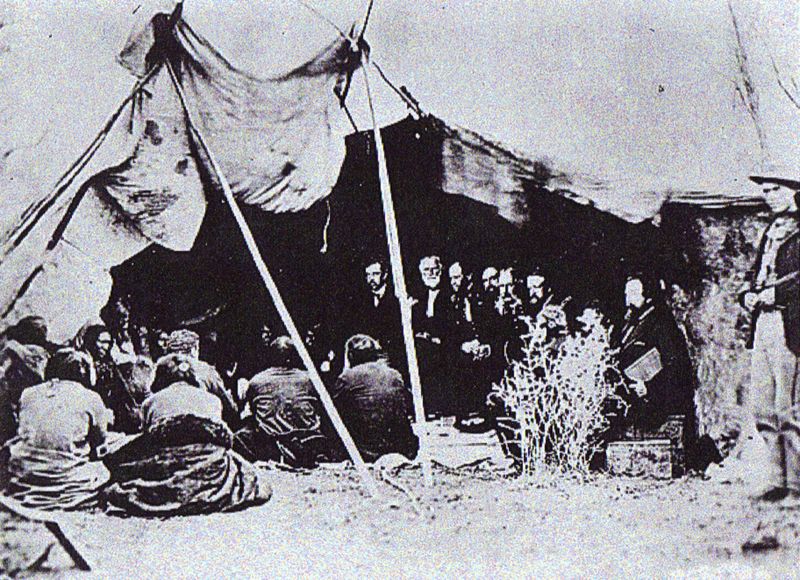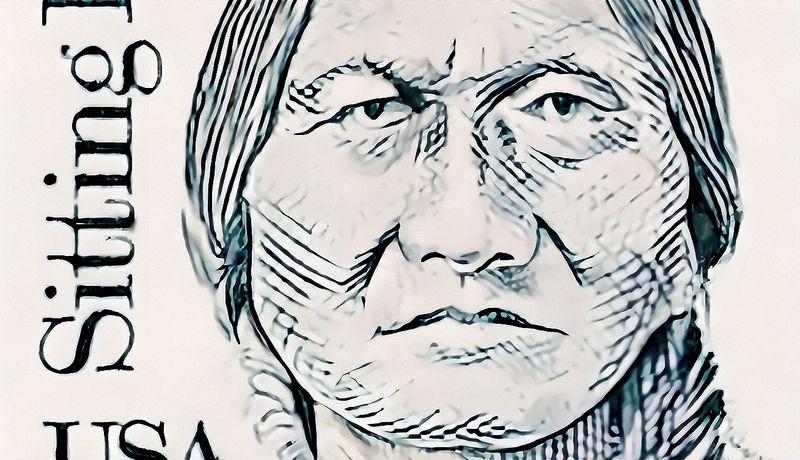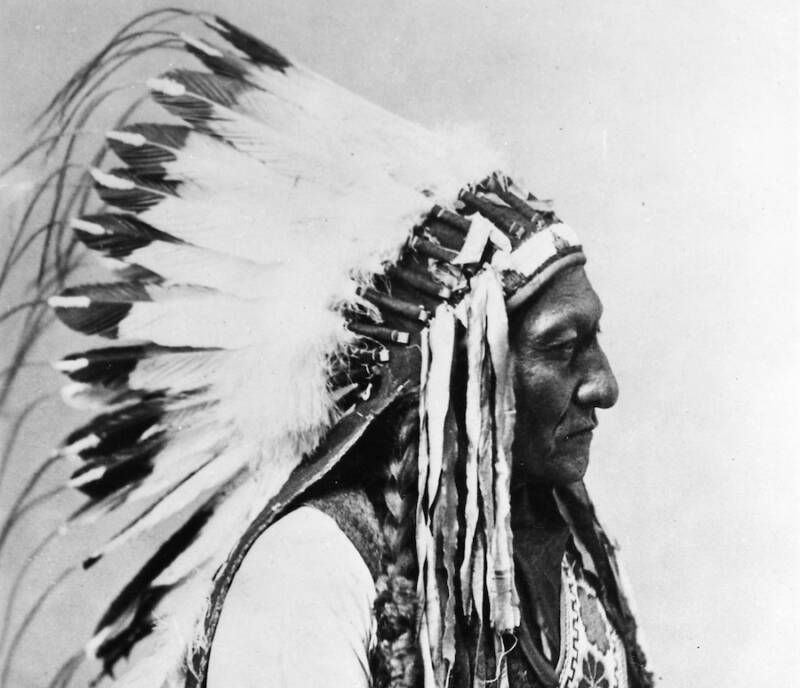Sitting Bull was one of the most powerful Native American chiefs who stood against American expansion into tribal lands.
His courage, wisdom, and leadership united the Sioux nation during a critical time in history.
Many schoolbooks gloss over his remarkable story, but these facts reveal why he remains such an important figure in the struggle for Native American rights and sovereignty.
1. Prophetic Vision Foresaw Victory
During a Sun Dance ceremony in June 1876, Sitting Bull experienced a powerful vision that changed the course of history. He saw soldiers falling upside down into the Lakota camp like grasshoppers from the sky.
This spiritual message convinced him that a great victory awaited his people. Just days later, his prediction came true when General Custer and his troops were defeated at the Battle of Little Bighorn in one of the most famous Native American victories.
His reputation as a spiritual leader who could communicate with higher powers was cemented by this accurate prophecy.
2. Teenage Warrior’s First Battle
At just 14 years old, young Jumping Badger (later known as Sitting Bull) rode into combat against Crow warriors, displaying unusual bravery for someone so young. Fellow warriors watched in amazement as the teenager charged forward without hesitation.
This early battle wasn’t just a coming-of-age moment—it established him as someone with natural leadership abilities. The other Lakota fighters recognized something special in the young warrior’s fearlessness and tactical thinking.
His father beamed with pride, knowing his son would one day become an extraordinary leader for their people.
3. From Jumping Badger to Legendary Chief
Born with the humble name ‘Jumping Badger,’ his father actually nicknamed him ‘Slow’ because of his careful, thoughtful nature as a child. Everything changed after a particularly brave battle against the Crow tribe when he was still a teenager.
His impressed father performed a special ceremony, giving up his own name ‘Sitting Bull’ and bestowing it upon his son. This name transfer was a profound honor in Lakota culture, symbolizing the passing of strength and wisdom between generations.
The new Sitting Bull embraced this identity, living up to its powerful meaning throughout his life.
4. Medicine Man With Powerful Visions
Many remember Sitting Bull solely as a war chief, but his spiritual leadership was equally important to the Lakota people. He regularly performed sacred rituals, including the physically demanding Sun Dance, where participants danced for days without food or water.
His visions were taken seriously by tribal members who believed he could communicate directly with Wakan Tanka (the Great Spirit). Fellow Lakota sought his guidance during difficult times, trusting his spiritual insights to guide important decisions.
Even U.S. military leaders acknowledged his spiritual influence, recognizing it strengthened his political power among Native peoples.
5. Unification of Scattered Tribes
Amidst increasing threats from white settlers, Sitting Bull achieved something remarkable—bringing together the often independent Sioux bands under unified leadership. His magnetic personality and clear vision for protecting their way of life convinced chiefs from the Hunkpapa, Oglala, Minneconjou, and other Lakota groups to join forces.
This unification wasn’t just political but cultural and spiritual as well. He reminded diverse bands of their shared heritage and common enemies.
Without his diplomatic skills in creating this powerful alliance, the resistance against American westward expansion would have been far less effective.
6. Refused All Treaty Signatures
While many Native leaders reluctantly signed treaties with broken promises, Sitting Bull maintained an unwavering position: no compromise with the U.S. government. He famously declared, “What treaty have the Lakota made with the white man that the white man has kept?”
This principled stance made him particularly threatening to American officials who relied on treaty signatures to justify land seizures. His refusal wasn’t mere stubbornness but came from witnessing how treaties had repeatedly been violated.
Even when facing starvation and hardship, he maintained this position longer than almost any other major chief of his era.
7. Mastermind Behind Custer’s Defeat
Though he didn’t personally lead the charge at Little Bighorn, Sitting Bull’s strategic brilliance made the victory possible. His alliance-building created the largest gathering of Plains Indians in recorded history—thousands of warriors from multiple tribes united against a common threat.
During the battle, he focused on protecting the women and children in camp while warriors like Crazy Horse led the fighting. His pre-battle Sun Dance ceremony, where he sacrificed 50 pieces of his own flesh, inspired warriors with supernatural confidence.
The defeat of Custer shocked America and temporarily halted westward expansion, marking the peak of Native American resistance.
8. Canadian Exile After Victory
Following the triumph at Little Bighorn, Sitting Bull knew harsh retaliation would come. Rather than surrender, he led approximately 1,000 followers across the border into Canada in 1877, seeking refuge in what the Lakota called the “Grandmother’s Land.”
Canadian authorities allowed them to stay but offered no assistance during increasingly harsh winters. For four difficult years, his people struggled with inadequate hunting grounds and dwindling supplies.
American officials repeatedly sent delegations trying to convince him to return, but he stubbornly refused until starvation finally forced his hand in 1881.
9. Surrender That Shocked America
When Sitting Bull finally surrendered at Fort Buford in 1881, the event made national headlines across America. His reputation had grown so legendary that many considered him the most famous Native American alive.
At the surrender ceremony, he proudly stated: “I wish it to be remembered that I was the last man of my tribe to surrender my rifle.” This wasn’t just defiance but a powerful statement about his unwavering commitment to Lakota freedom.
Though physically defeated, his dignified surrender transformed him from military enemy to cultural icon in the eyes of many Americans.
10. Unlikely Star of Buffalo Bill’s Show
In one of history’s strangest career changes, the fearsome war chief joined Buffalo Bill Cody’s Wild West Show in 1885. For $50 a week—an enormous sum at that time—he paraded through arenas filled with the very people whose expansion he had fought against.
During his four-month tour, Sitting Bull cannily used his celebrity status, charging for autographs and photographs. He refused to participate in reenactments of battles, considering them disrespectful.
White audiences were fascinated by his presence, often giving him standing ovations—a complicated reception for someone portrayed as a savage enemy just years earlier.
11. Generous Chief Gave Away Wealth
Despite earning substantial money from Buffalo Bill’s show, Sitting Bull returned to Standing Rock Reservation with almost nothing. Eyewitnesses reported seeing him regularly distribute his earnings to reservation children and elders in need.
When he saw poverty among his people, he couldn’t keep wealth for himself. This generosity reflected traditional Lakota values where leaders gained respect not by accumulating possessions but by giving them away.
His interpreter reported that Sitting Bull was particularly moved by poor white children he saw in eastern cities, sometimes stopping to give them coins despite their parents’ discomfort.
12. Outspoken Critic Until The End
Even after surrendering and living on the reservation, Sitting Bull never stopped advocating for Native rights. He frequently spoke out against broken treaties and the destruction of Lakota culture, becoming a thorn in the side of Indian agents.
When government officials tried to take more reservation land in 1888, he delivered powerful speeches opposing the plan. “The life of white men is slavery,” he famously declared. “They are prisoners in towns or farms. The life my people want is freedom.”
This outspokenness made authorities view him as dangerous long after he had laid down his weapons.
13. Fierce Opposition To Land Division
When Congress passed the Dawes Act in 1887, aiming to break up tribal lands into individual plots, Sitting Bull emerged as one of its most vocal opponents. He understood this wasn’t just about land but about destroying the communal basis of Native life.
“The land belongs to us, for the Great Spirit gave it to us when he put us here,” he argued. The concept of individual land ownership contradicted everything the Lakota believed about their relationship with the earth.
His resistance influenced many Lakota to refuse allotments, temporarily slowing the government’s plan to acquire “surplus” reservation land.
14. Tragic Death By Native Police
The final chapter of Sitting Bull’s life came during the Ghost Dance movement of 1890. Authorities feared his influence over this spiritual revival that prophesied the disappearance of white people and return of buffalo herds.
On December 15, 1890, 43 Indian police officers arrived at his cabin before dawn to arrest him. When his supporters tried to prevent the arrest, gunfire erupted.
The great chief was shot by Sergeant Red Tomahawk and another officer—both Lakota men working for the government. His 17-year-old son Crow Foot died beside him, creating a tragic end for a man who had survived countless battles with the U.S. Army.
15. Enduring Symbol Of Resistance
More than a century after his death, Sitting Bull’s name continues to inspire movements for Indigenous rights worldwide. His image—with characteristic braids and penetrating gaze—has become an internationally recognized symbol of Native American resistance and dignity.
Books, films, and songs celebrate his uncompromising stand against colonization. His great-grandson Ernie LaPointe has worked tirelessly to correct historical misrepresentations and honor his ancestor’s true legacy.
In 2021, DNA testing confirmed remains at his burial site were indeed Sitting Bull’s, allowing his descendants to move him to a more appropriate resting place.
